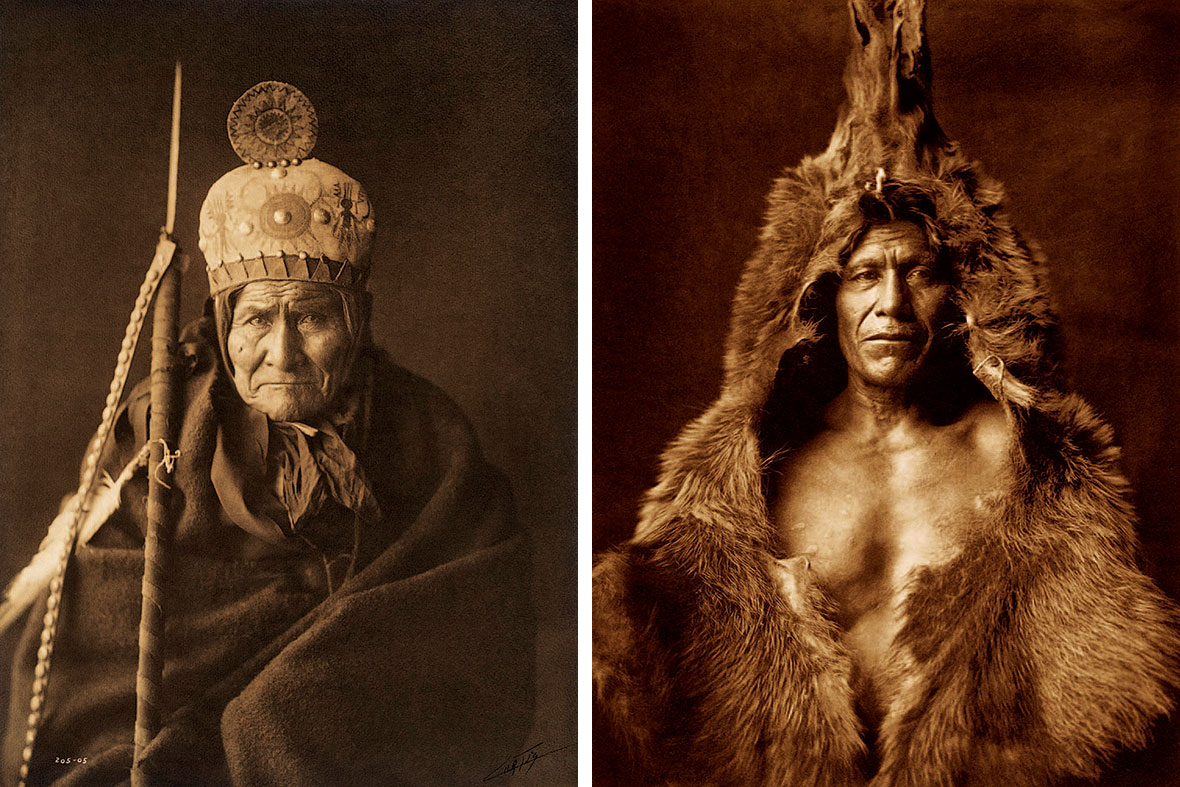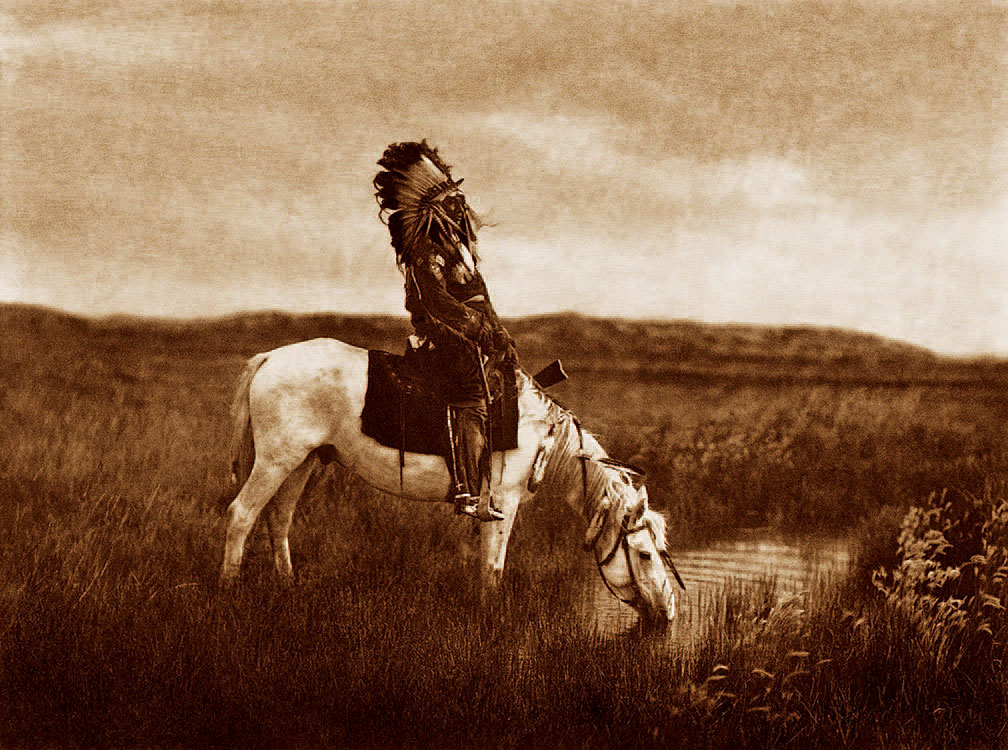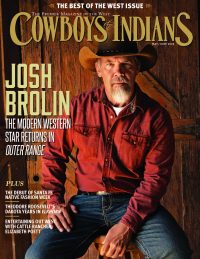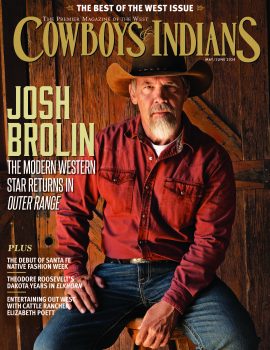A new book and exhibition select the best of the best from one of the great achievements in photographic history.
His is one of the most well-known stories in the history of photography. His body of work is also one of photography’s greatest achievements. Edward S. Curtis spent most of his working life documenting what he feared were vanishing peoples, risking — and losing — nearly everything to see his opus, The North American Indian, to completion. More than a century later, his legendary work seems inexhaustible in the fascination and information it holds.
If Curtis hadn’t spent the majority of his life creating photographs, wax cylinder recordings, film, and ethnographic text to document Native American life, the world would be a less whole and a less rich place, says Christopher Cardozo. A Curtis expert, collector, and private dealer, Cardozo is the man behind the thoughtfully curated book and traveling exhibition Edward S. Curtis: One Hundred Masterworks.
The book (DelMonico Books/Prestel, 2015) features “the best of the best.” The insightful text, including three essays by Cardozo, gives readers a glimpse of who Curtis was as an artist and focuses on specific ways he made an impact on received history. But, as even Cardozo admits, there’s nothing like seeing the work in person, which you can do at the Palm Springs Art Museum February 20 – May 29; the Glenbow Museum in Calgary, Alberta, Canada, June 18 – September 18; and the Flagler Museum in Palm Beach, Florida, October 11 – December 31.
Cowboys & Indians talked with Cardozo about his latest contribution to Curtis scholarship, Curtis’ Native American subjects as co-creators, and why the photographer’s work remains so evocative and important.

Cowboys & Indians: Does anything get lost between Curtis’ artistic point of view as a photographer at the turn of the century and the modern audience?
Christopher Cardozo: I think it’s impossible for any of us today to really understand what Curtis experienced and what the Native people were communicating to us. It is such a deep, powerful message. It was from a different time, a different consciousness. It’s impossible for any of us to truly understand the complexity, the depth, and the cultural context in which it was created. Curtis created 40,000 to 50,000 negatives, he made 10,000 wax cylinder recordings of language and music, he did pioneering film footage, and he produced 2.5 million words of finished ethnographic text. It is an incredibly deep, rich body of work. The best one can hope for with a book or an exhibition is to give a glimpse of the essence of it, and that’s what we worked very hard to do in the exhibition and in the book. We tried to give people a glimpse of the essence of who Curtis was, what the body of work was, and how it got created.
Something we talk about in the book that I think is very powerful, and something that got lost for a while, is that it’s absolutely clear that the Native people were active participants. They were co-creating with Curtis. When you look at the images and when you look at the openness, the vulnerability, the presence that people have when they are being photographed by Curtis, it’s unique in history. You can see that the Native people are actively helping him create this record. Curtis changed the way an entire nation viewed its Native people. It’s quite amazing, and it is unparalleled in the nearly 180-year history of photography.
C&I: How do you think history, as we know it, would be different if Curtis hadn’t documented the Native American way of life to the extent he did?
Cardozo: I think the world would be a less rich and a less inclusive place. When you look at Curtis’ work, one of the most fundamental aspects is his concern with beauty, heart, and spirit. Those are the three underlying essential qualities in what he created, and those are all very healing qualities. Then you look at the environmental aspects, which we’re focusing on more and more (we have an essay by internationally known environmentalist Michael Tobias in One Hundred Masterworks); it’s another very important aspect of the work.
Today, Native people are actively reviving their language, their culture, and Curtis’ work is often used in these efforts. Without this collaboratively created body of work, many Native people would have no idea what their grandparents and great-grandparents looked like, how they lived, or what they believed. Overall, this is what I refer to as the Sacred Legacy. It remains a unique resource for Native people, which is really important. And it’s really a deeply human story. It’s about perseverance and passion, vision, diversity, and inclusion — deeply human qualities that are all inherent in his work.
It’s powerful, emotional work. I’ve sent exhibitions around the world, from Papua New Guinea to South Africa to Paris — all over the globe, 40 different countries. It is not uncommon to see people moved to tears. Regardless of their culture, people are really touched by how beautiful Curtis’ photographs are and how they are imbued with beauty, heart, and spirit.
C&I: From your point of view as a photographer and Curtis collector, what can be learned about the subject of a portrait beyond first glance?
Cardozo: Curtis as a portraitist was simply a genius. What he did, very, very few photographers did and no other photographers of Native Americans accomplished. He shows us the essence of who these people are. Without getting too “New Age-y” about it, I believe that many of the Native people who sat for him were trying to share who they were at a soul level. When you look at his photographs carefully, you understand why people are so touched and sometimes spontaneously moved to tears.
I’m looking at one right now, a very powerful Hopi chief who is looking directly at me. It’s clear when you look at many Curtis portraits that they knew this was the only record their children and grandchildren and great-grandchildren would ever have of what they looked like. So it was a very important process. You can see how present they are, how much they are sharing who they are at the deepest levels. And Curtis, because of his strength as a human being and also his mastery of the art of photography — particularly lighting and composition — was able to create images and photographic objects that seamlessly convey to the viewer who the subject really was on the deepest levels.

C&I: Some people criticize Curtis for creating a “romanticized” view or staging some of his photos. How do you weigh in?
Cardozo: I think it’s basically completely missing the point. And I think it’s very unfair when people criticize Curtis for being overly romantic. What one has to do, first of all, is look at what Curtis was saying and what was accepted at the time. He had to go in front of a blue-ribbon committee at the Smithsonian before J.P. Morgan would give him his money to get [the project] started, and he passed with flying colors. So the elite of the anthropology, ethnographic community gave him their blessing.
Even more important, you have to look at his whole body of work. He did 10,000 sound recordings, groundbreaking film footage, and incredible text — unrivaled text — and 40,000 to 50,000 negatives. Only in some of the photographs was he trying to convey what Native people were like before contact with Europeans. His goal was to show us who they really were as human beings, not what they looked like in 1900. These “romantic” photographs comprise only a small percentage of his overall work. Nearly everyone “knows” Curtis only from looking at popular books that all draw from the same 100 to 150 images, and, by and large, they don’t know that Curtis did still-life and landscape photographs and he did a lot of work that was purely documentary. But his “artistic” photographs are really what he most wanted to do.
Do you know who Isabel Allende is? She’s an internationally respected magical realist. She writes novels that are not based in reality as we know it. She was being interviewed recently, and there was this perfect moment when the interviewer said, “This must be very challenging for you, to write in the magical realist style, because for the first 10 or 20 years of your career you were a reporter and dealt with nothing but facts. That’s all you wanted and that’s what you worked so hard to get. Magical realism has almost nothing to do with the facts.” The interviewer then said, “It’s like you are trying to tell a deeper truth and facts would have just gotten in the way.”
I think that’s exactly what Curtis did as an artist. Not as an ethnographer, not as a writer, not as an audio preservationist, and not as a filmmaker — but as a photographic artist. At the core of his photographic work, he is an artist. He’s trying to show us deep human truths.
Visit our store to order a copy of Edward S. Curtis: One Hundred Masterworks.
From the February/March 2016 issue.












